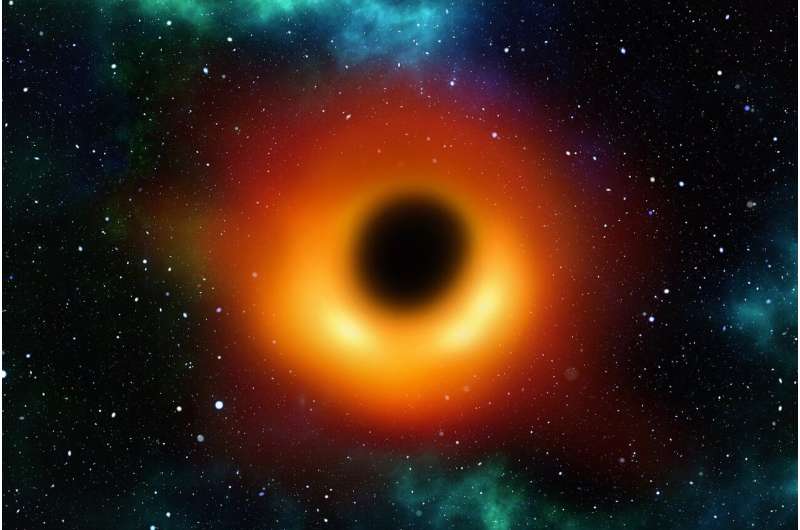Next-generation telescopes could detect the direct collapse of enormous black holes near the beginning of time

The first black holes to appear in the universe may have formed from the direct collapse of gas. When they collapsed, they released a flood of radiation, including radio waves. A new study has found that the next generation of massive radio telescopes may be able to detect these bursts, giving precious insights into a critical epoch in the history of the universe.
Astronomers have identified supermassive black holes stretching almost back to the beginning of the universe, when it was less than 700 million years old. The usual routes of black hole formation (via the deaths of massive stars, followed by gorging on surrounding material) have trouble producing such giant black holes so early in the history of the universe.
One way to build giant black holes is to have them simply… appear. If a large enough cloud of gas (say, 1 million times the mass of the sun) can collapse quickly enough, then stars won't have time to form and the cloud directly forms a giant black hole.
This is a hypothesis, and hypotheses need to be tested. Surely such a momentous event would release enormous amount of electromagnetic radiation, some of which may be detected by the James Webb Space Telescope, the Nancy Grace Roman Telescope, and Euclid. But those detections would be very tenuous, even in best-case scenarios (i.e., extremely bright emission during the collapse process).
However, in a recent study a team of astronomers found a more encouraging pathway to observing the potential direct collapse of giant black holes: radio waves.
When the black holes first collapse, they form accretion disks around them as material swirls inwards. Those accretion disks power up insane amounts of radio emission. It's through this radio emission that astronomers first observed giant black holes, known as quasars. This same process would play out in the early universe, and since it's so scaled up in power, it might be detectable in the present day.
The researchers found that the upcoming Square Kilometer Array, a massive telescope array spread across South Africa and Western Australia, would be able to detect this kind emission, hopefully resolving this critical mystery from the deep past.
More information: Daniel J. Whalen et al, Radio Emission from Direct-Collapse Black Holes. arXiv:2110.00012v1 [astro-ph.GA],
Source Universe Today





















